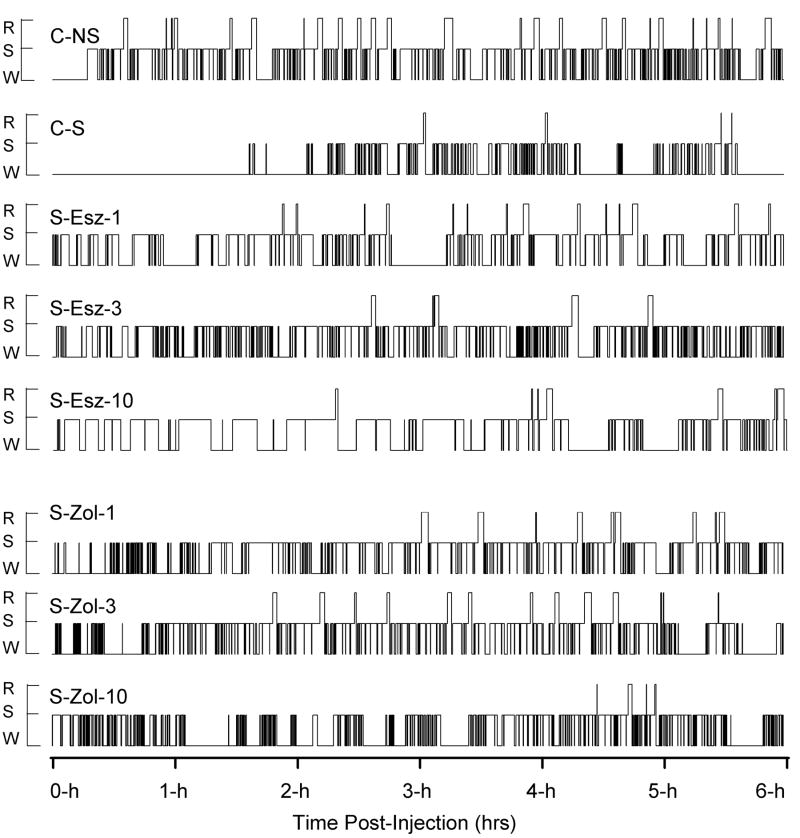Figure 1.
Examples of sleep-wake architecture for the 6-h period starting immediately after eight different types of treatment in various rats. The treatments were: non-shocked vehicle-injected (C-NS), shocked and vehicle-injected (C-S), shocked and 1 mg/kg dose of eszopiclone-injected (S-Esz-1), shocked and 3 mg/kg dose of eszopiclone-injected (S-Esz-3), shocked and 10 mg/kg dose of eszopiclone-injected (S-Esz-10), shocked and 1 mg/kg dose of zolpidem-injected (S-Zol-1), shocked and 3 mg/kg dose of zolpidem-injected (S-Zol-3), and shocked and 10 mg/kg dose of zolpidem-injected (S-Zol-10). These eight 6-h continuous step histograms plot occurrence and duration of polygraphically and behaviorally defined wakefulness (W), slow-wave sleep (S), and REM sleep (R).

